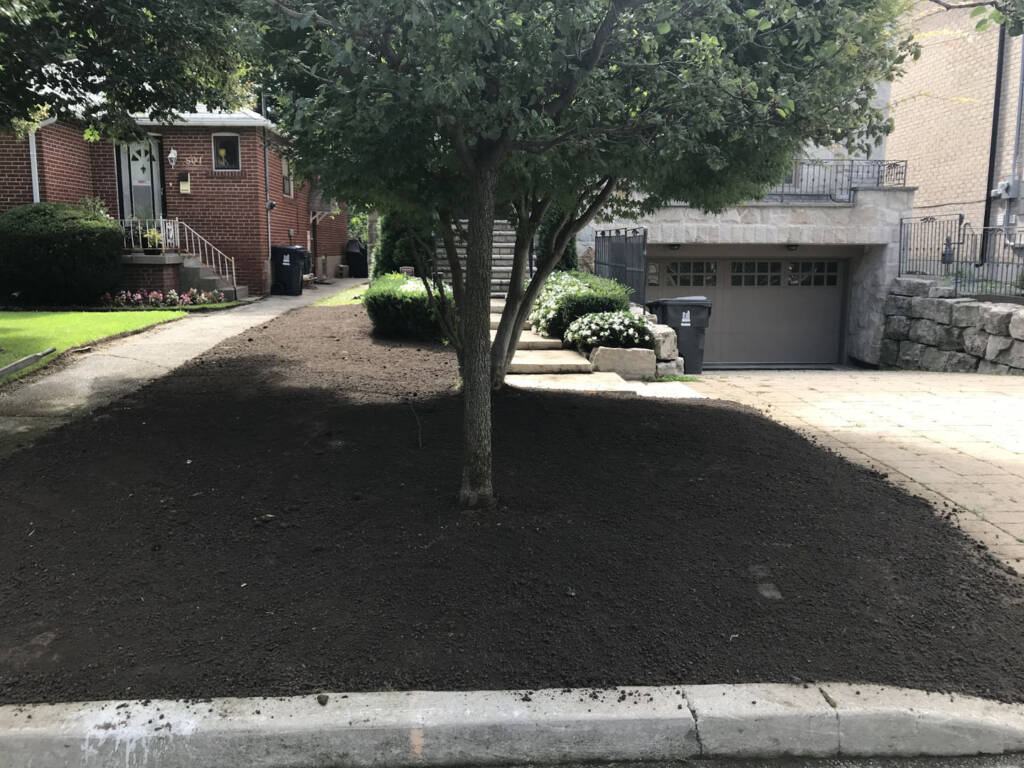A bumpy, sunken, or lumpy lawn isn’t just unsightly — it can be a sign of deeper issues below the surface. Whether you’re dealing with minor turf depressions or full-blown sink spots, this guide walks you through the main causes of an uneven lawn, how to diagnose them, and how to fix each one effectively.
Common Causes of Uneven Lawns (And How to Identify Them)
An uneven lawn doesn’t just look off—it can be a sign that something underneath the surface isn’t quite right. Whether it’s a subtle dip or a sudden low patch, the root cause often ties back to what’s going on below the grass.
From natural settling to drainage issues and underground plumbing problems, here’s how to spot the signs early and figure out what might be throwing your yard off balance.
1. Soil Settling Over Time
Why it happens: Newly constructed homes or areas with recent landscaping often experience natural soil settling.
Signs: Uniform low spots or mild undulations throughout the yard.
Fix: Light topdressing with a leveling mix once or twice a year.
2. Poor Drainage or Water Runoff
Why it happens: Inadequate grading, heavy clay soil, or compacted subsoil causes water to pool and shift the ground.
Signs: Standing water after rain, algae patches, soggy footprints.
Fix: Regrade slope, install French drains, or topdress with sand-heavy mix.
3. Underground Plumbing Issues (Leaky Pipes)
Why it happens: Broken irrigation lines, sewer lines, or burst water mains cause sinkholes or soft spots.
Signs: Sudden depressions near utilities, unusually lush patches, or a constant damp area.
Fix: Call a professional to inspect and repair. Reseed or re-sod the area afterward.
4. Animal or Insect Damage
Why it happens: Moles, voles, groundhogs, or lawn grubs disturb the soil beneath.
Signs: Tunneling trails, mounds, patchy turf, loose spongy soil.
Fix: Identify pest (e.g., via traps or grub test), apply control treatment, then level with topdressing or regrade as needed.
5. Heavy Foot Traffic or Equipment Damage
Why it happens: Frequent mowing on wet soil, wheelbarrows, or footpaths compacts and depresses turf over time.
Signs: Compacted, threadbare paths or worn-out grass lanes.
Fix: Core aerate, fill with soil mix, and overseed in fall or spring.
Step-by-Step: How to Fix an Uneven Lawn
Uneven lawns are common, but luckily, they’re not too tricky to fix if you know what to look for. Here’s a straightforward breakdown of three go-to methods depending on how deep the low spots are.
Option 1: Topdressing for Shallow Dips
Best for: Minor low spots less than 1 inch deep
What You’ll Need:
A mix of 40% screened topsoil, 40% play sand, and 20% compost (skip any mixes that contain mulch)
How to Do It:
- Mow the grass short and clear off any sticks, leaves, or debris.
- Use a shovel or wheelbarrow to mix and move your topdressing blend.
- Spread a thin layer—no more than ½ inch thick—over the low areas.
- Rake it evenly and then work it into the grass with a stiff broom.
- Give it a light watering (just enough to settle the mix, not soak it).
- Check back in 4 to 6 weeks and reapply if needed.


Option 2: Lifting Turf and Backfilling
Best for: Uneven spots between 1 to 3 inches deep
Steps:
- Use a sharp spade to carefully cut around the sunken area and peel back the turf like a flap.
- Fill in the space below with your soil mix, then tamp it down gently to prevent future settling.
- Set the turf back in place, press it down firmly, and water well.
Option 3: Reseeding or Resodding Deeper Holes
Best for: Low spots deeper than 3 inches or areas dug up from repairs or pests
Steps:
- Strip away any damaged grass and level the area with topsoil, compacting as you go.
- Choose a grass seed that matches your existing lawn (or suits your region).
- Water regularly, and hold off on mowing until the new grass has taken root and started to fill in.

Keep Your Lawn Level: Ongoing Maintenance Tips
Uneven lawns often creep back when soil gets compacted, water pools in certain spots, or the grass roots weaken. To avoid this, aerate your lawn once or twice a year to keep the soil loose and breathable. Water deeply but infrequently to encourage strong root growth, and fix any drainage problems early before they cause dips. If there’s an area that gets walked on a lot, consider stepping stones or rerouting foot traffic. A well-fed lawn with strong roots is your best defense against future sinking.
Contact Us
There you have it – a few simple ways you can level your uneven lawn and have your lawn looking great again. For more information or assistance handling uneven lawns, call JHC Landscaping Services today.
